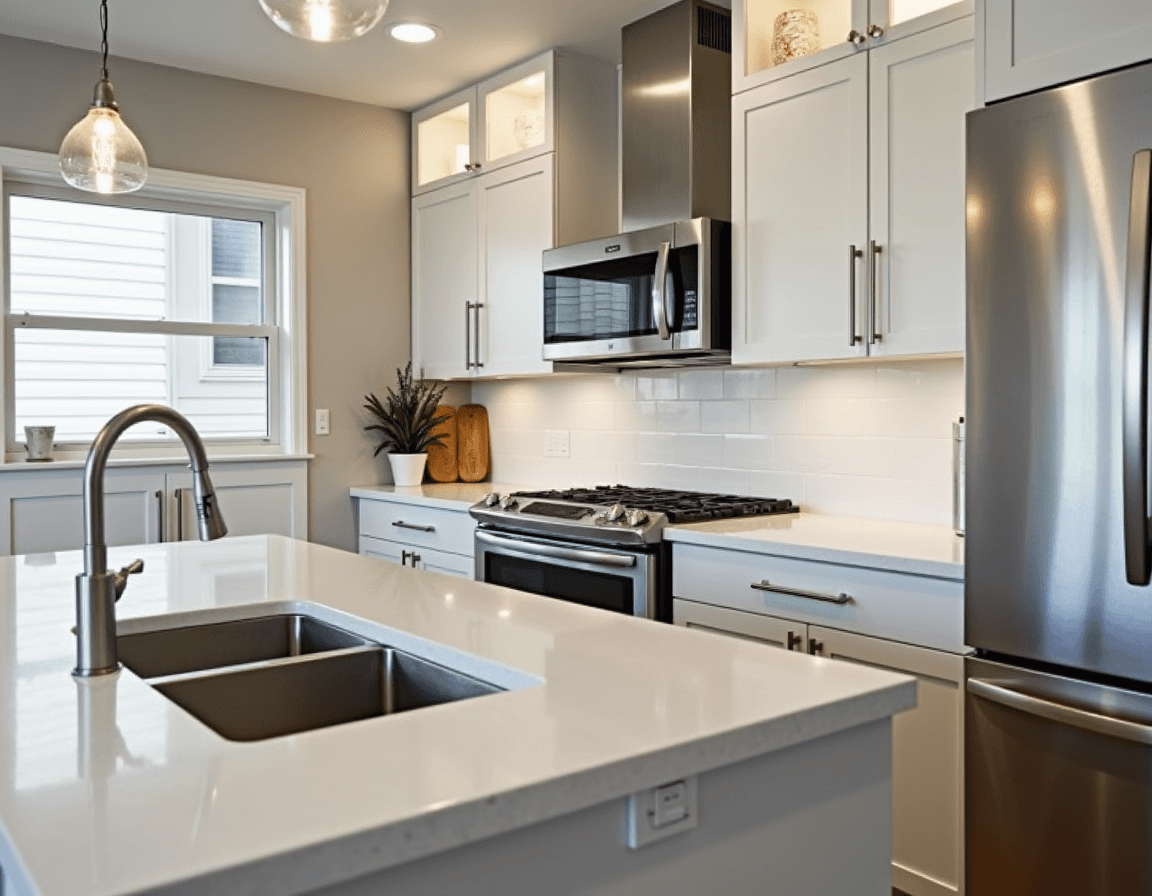Jul 3, 2025
•
Onton Team
Explore types of sinks, their pros and cons, and tips to choose the best style for your kitchen. Compare options like farmhouse, undermount, and fireclay.
While sinks aren't always the most flashy part of a kitchen, that’s no reason for them to be overlooked. A sink with the right height, width, and depth makes many kitchen tasks more comfortable, and its material and shape can shift the overall vibe of your meal prep space. Deep matte-black undermount sinks read modern and dramatic, while wide apron-front sinks add a soft, more traditional touch.
In this guide, we’ll walk you through the most common types of sinks, what makes each one useful, and how to choose the right fit for your space. From workstation setups perfect for multitasking to farmhouse sinks that make a big statement, we’ll break down the pros, cons, and design details of each kitchen sink style.
8 common types of kitchen sink
When choosing a sink, consider two questions: How do you work in the kitchen, and what kind of style do you want to cultivate? Whether you’re just swapping out your sink or reimagining the room’s entire layout and flow, here are eight kitchen sink styles to choose from.
Top-mount (drop-in) sinks
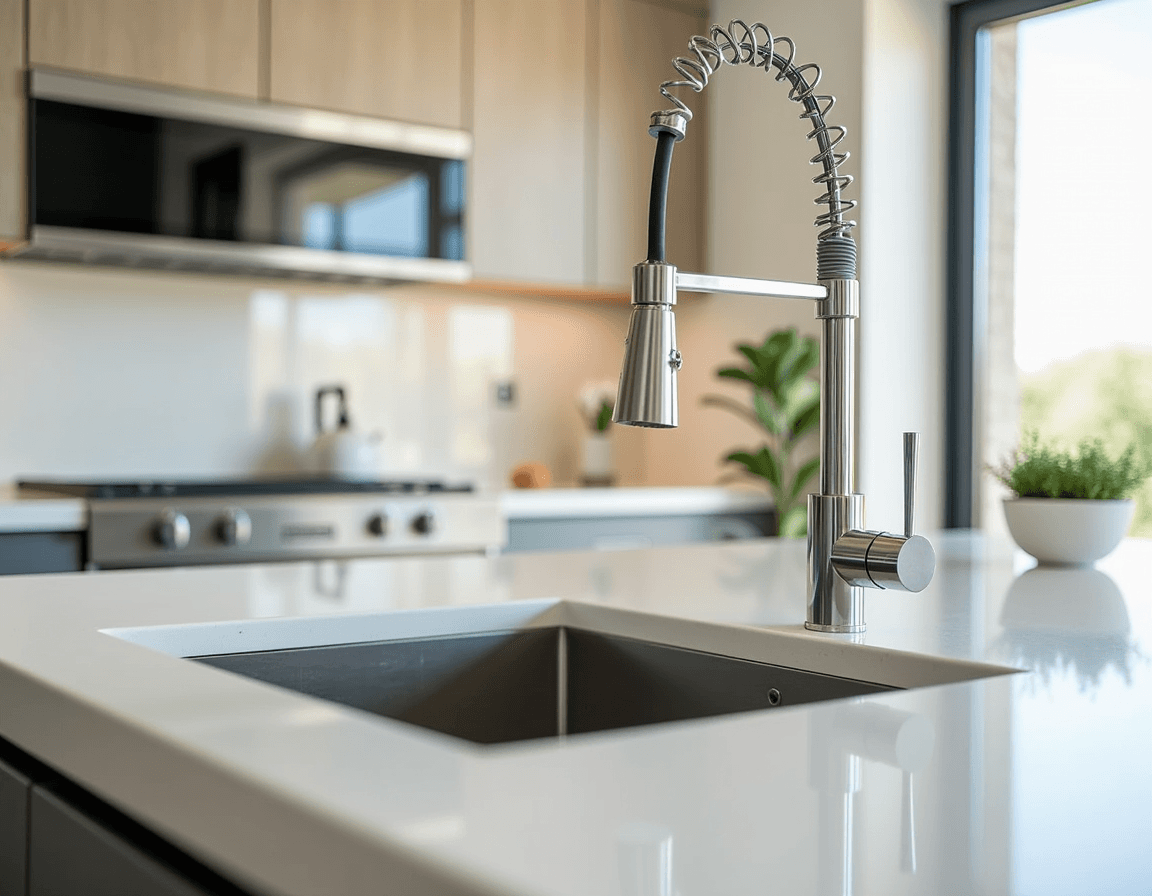
Top-mount sinks, also referred to as drop-in sinks, drop into a cutout in your kitchen countertop with a rim that rests visibly on the surface. They’re straightforward to install, replace, and clean. And the raised lip creates a barrier from splashing, protecting the porous wood of your kitchen cabinets and countertops.
You’ll find top-mount sinks in plenty of finishes, from sleek stainless steel sinks for a modern design to colorful enameled steel or porcelain for a retro or farmhouse look.
Undermount sinks
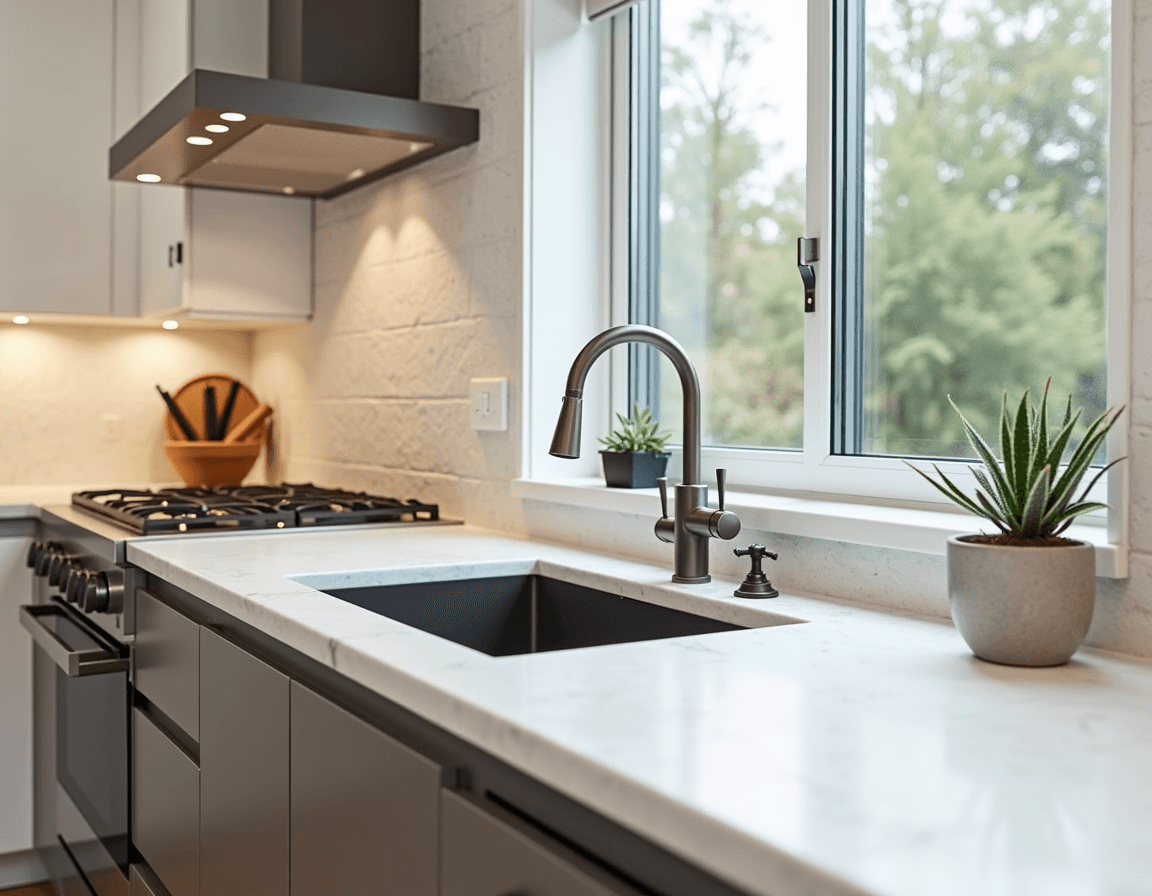
Installed beneath the countertop, undermount sinks create a sleek, seamless surface that makes post-food prep cleaning a breeze. Crumbs and water sweep straight into the kitchen sink without getting stuck on a rim.
Undermount sinks are ideal for granite, quartz, or solid counter surfaces and often come in stainless steel, cast iron, or porcelain. Though installation can be a bit more challenging for DIY designers, the added counter space is worth the work.
Farmhouse sinks
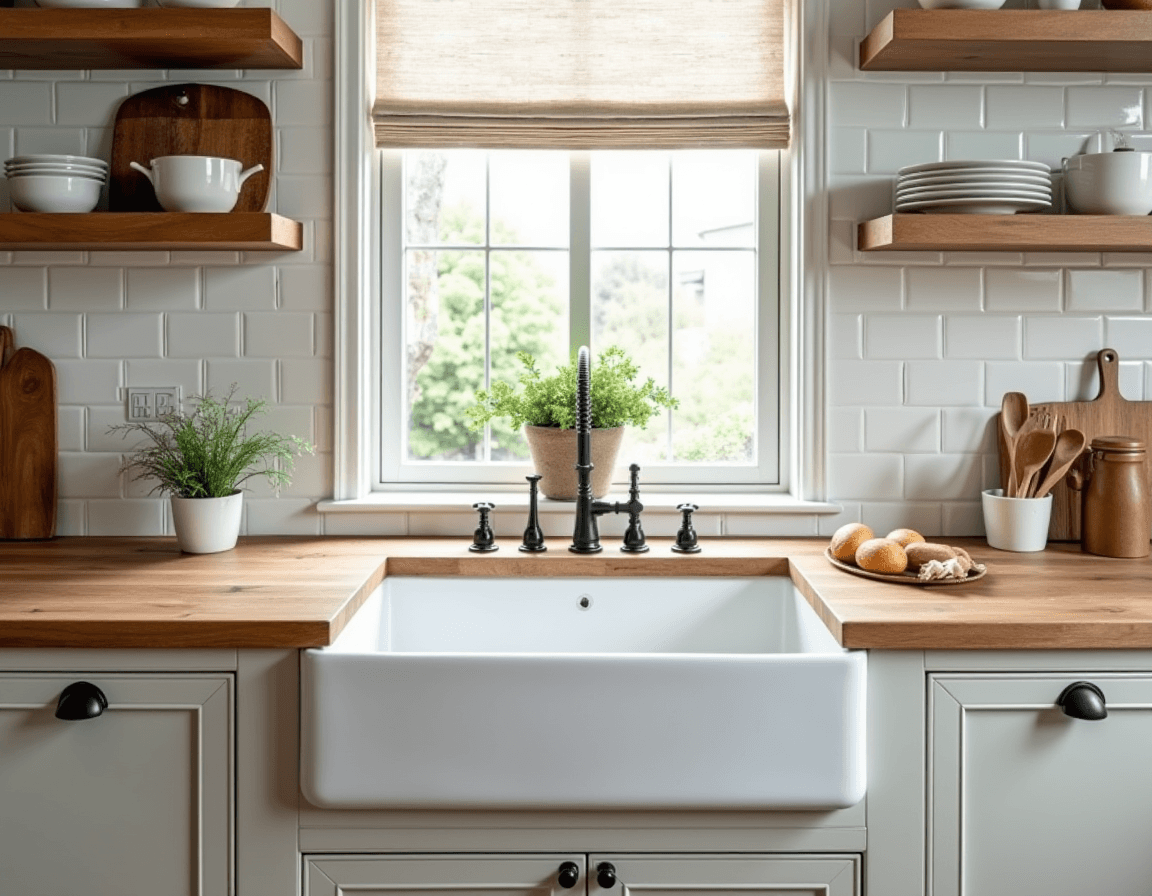
With their signature exposed front panel, farmhouse sinks (also known as apron-front sinks) bring a bold, charming look to any kitchen. Their deep, spacious bowls handle large pots and pans, meaning they’re a smart choice for busy home cooks. Sink basins are often crafted from fireclay or cast iron, making this a functional kitchen sink type that balances rustic appeal with durability.
Keep in mind that the deep basin of a farmhouse sink typically protrudes a few inches from the cabinetry and may sit slightly above the countertop. This creates a distinctive profile but also impacts a bar or countertop's height and ergonomics.
Explore farmhouse sinks on Onton
Corner sinks
Corner sinks turn hard-to-use counter space into a functional washing station. Most models feature two separate basins set at right angles to each other, forming an L-shape that fits neatly into a corner. The design leaves a center area between the sink bowls that works well for drying dishes or placing dish soap and a sponge.
While corner sinks are great for compact or unconventional layouts, they often require custom countertop cuts that can weaken the structure of your counter.
Drainboard sinks
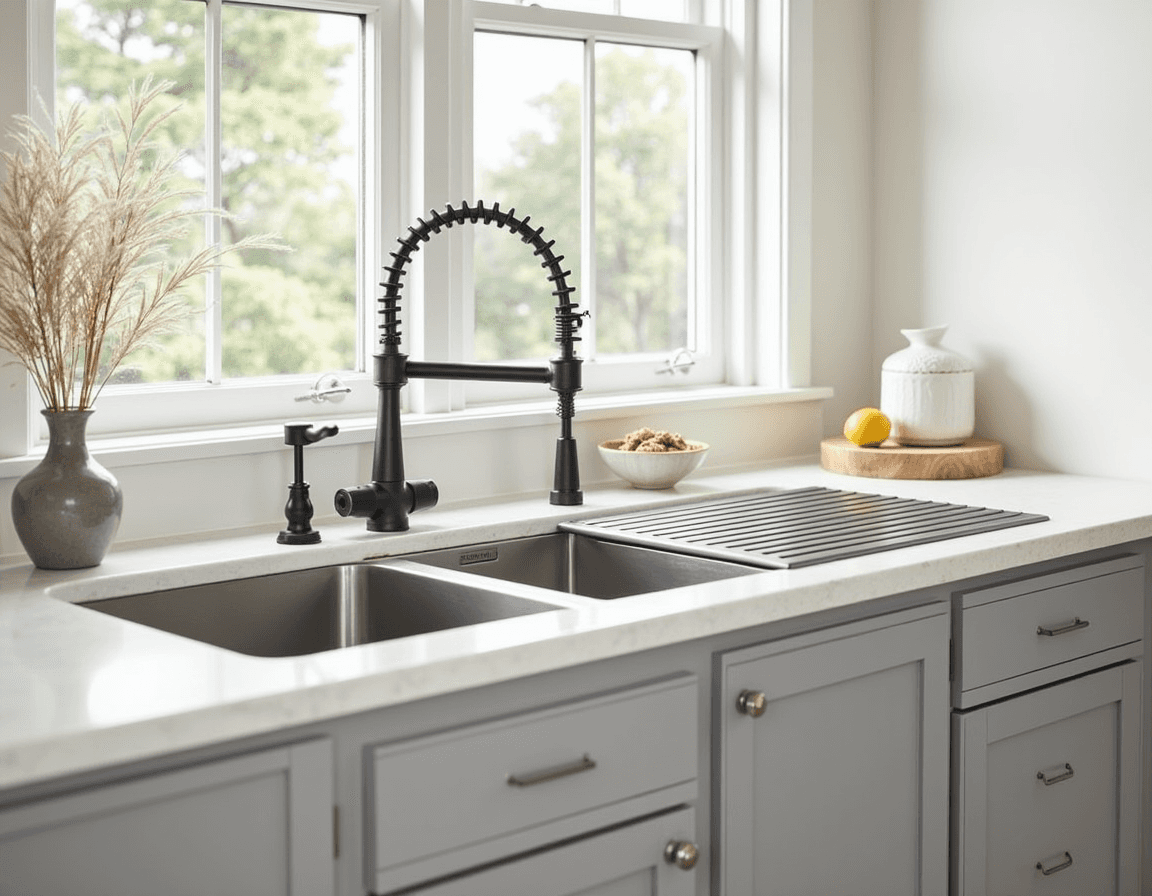
Drainboard sinks include a sloped drying surface next to the sink basin that lets dishes air-dry without soaking your countertop. Often crafted from durable stainless steel or cast iron, these sinks blend classic functionality with a clean, organized aesthetic.
Drainboard sinks are perfect for kitchens without extra space for drying racks or dishwashers, and frequent entertainers will also appreciate the workspace. Non-dishwasher-safe items like wooden bowls, fine china, or fragile glassware can dry safely without cluttering the counter.
Prep sinks
A prep sink is a small, single-basin sink that typically measures around 15 inches wide. It's designed to give you extra workspace without taking over your kitchen. They fit nicely into kitchen islands, separate bars, or on the edge of a countertop.
Prep sinks are convenient for kitchens where you frequently entertain or cook with others, allowing multiple people to prep produce, wash cocktail glasses, or handle small clean up without crowding the main kitchen sink. That said, they can be pricey and dominate your counter space. Before you splurge on one, weigh how much you’ll really use it against the space and budget it demands.
Workstation sinks
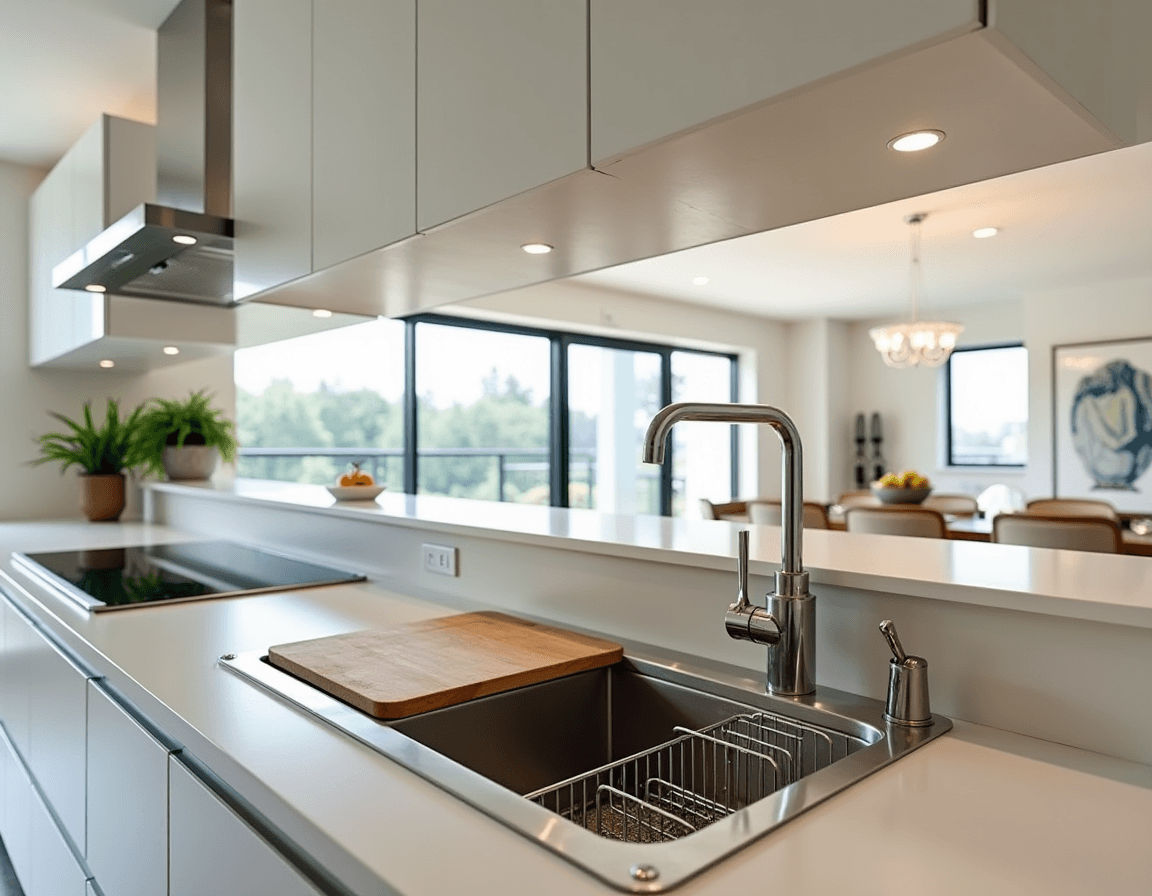
Workstation sinks are ideal for kitchen multitaskers who want to simplify food prep and clean-up in one spot. These sinks include several built-in accessories like cutting boards, colanders, and drying racks that slide across the sink bowl.
Many workstation sinks are divided into two separate basins, so you can wash produce on one side and leave dirty dishes on the other. Usually made from stainless steel, workstation sinks are easy to keep clean. Plus, they make great use of precious counter space.
Find a workstation sink on Onton
Integrated sinks
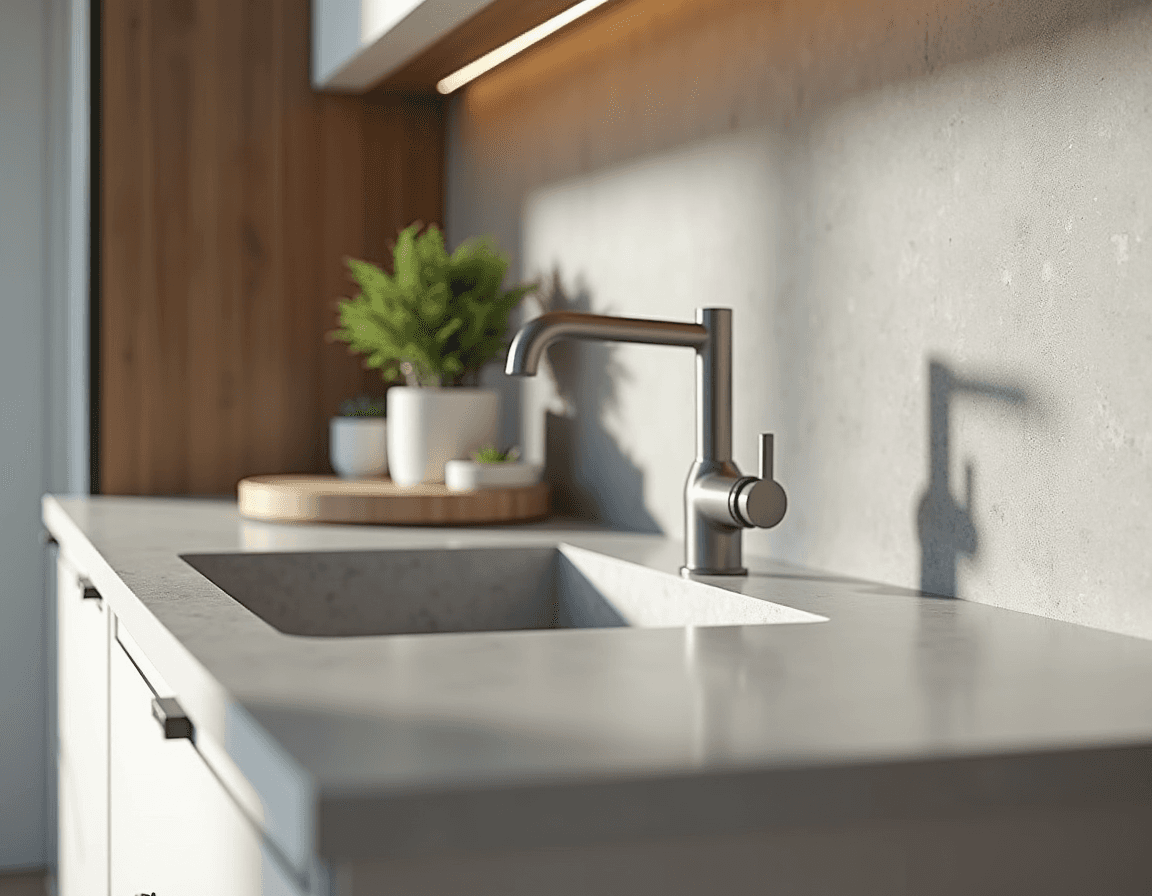
Integrated sinks are made from the same material as the countertop, giving your sink and counter one smooth, continuous surface. This means no edges or seams where dirt and grime can hide, making clean-up easier.
While integrated sinks look great, they require costly custom installation. Plus, if they get damaged, you can’t just replace the sink — you’ll also likely have to replace part of your countertop to keep things integrated.
Standard kitchen sink dimensions
The type of kitchen sink you choose dictates how comfortably you can wash dishes, prep food, and manage everyday clean-up. Here are the measurements of the most common sizes so you can decide which best works with your layout:
Single-basin sinks typically range from 22 to 30 inches wide, offering plenty of space for washing produce, dishes, and pots and pans. They’re practical for studio apartments or small families who want a simple, spacious sink bowl without sacrificing too much countertop space.
Double-basin sinks are usually 30 to 36 inches wide, making them ideal for busy households or kitchen multitaskers. A double-basin offers plenty of space to wash dishes in one bowl while prepping food in the other.
The standard depth of most sinks falls between 8 and 10 inches. Shallower kitchen sinks work well for everyday washing, while deeper options are ideal for home cooks who regularly use large pots, pans, or baking sheets.
What are the best materials for a kitchen sink?
Budget, design preferences, durability, and maintenance all come into play when choosing the right material for a kitchen sink. Here’s a breakdown:
Stainless steel sinks: A kitchen classic, stainless steel sinks are durable, affordable, and resistant to stains and heat. They fit well in clean, modern kitchens, especially when paired with stainless steel appliances. However, they can show water spots and scratches over time.
Fireclay sinks: A fireclay sink is made from glazed ceramic fired at high temperatures that create strong chip and crack-resistant sink bowls. They have a smooth, glossy finish that shines in farmhouse, traditional, and transitional kitchen designs.
Cast iron sinks: Cast iron sinks feature a thick, enamel coating over metal, making them extremely durable and heat-resistant. Similar to fireclay, they have a luxurious, glossy finish that can be painted in different enamels.
Copper sinks: A copper sink brings warmth and a unique, earthy feel. The way they catch reflections — especially under thoughtful kitchen lighting — adds depth and drama to any kitchen. Over time, copper sinks develop a patina, adding extra character to rustic, cottagecore, and bohemian kitchens. However, copper requires regular care to prevent tarnishing and can be more expensive than other materials.
Granite composite sinks: These sinks combine natural stone particles with resin for a durable, scratch and stain-resistant surface. Typically, they have matte finishes that complement modern and contemporary kitchen designs. Granite composite sinks are heavy and tend to be pricier, but they’re nearly indestructible.
Choose the right kitchen sink with Onton
Debating between a double-basin stainless steel sink or an elegant fireclay undermount? Onton’s AI-powered search engine makes it easy to explore options that fit into any design style. Try prompts like “double farmhouse sink” or “copper kitchen sink” to browse items from top brands.
Once you pick a few favorites, use Onton’s Imagine tool to see how a new sink will fit into your space. Just upload a photo and start experimenting with decor options and design details.
Dream up your ideal kitchen sink setup with Onton.

